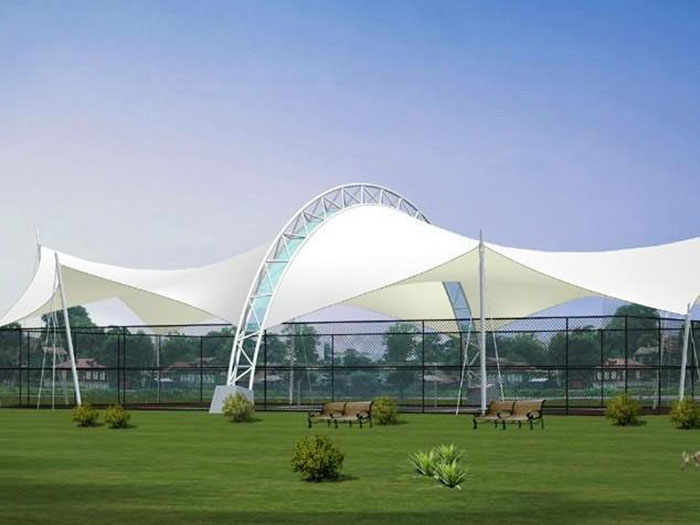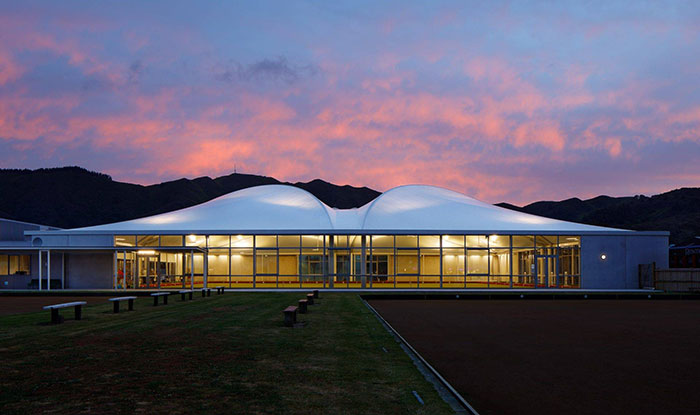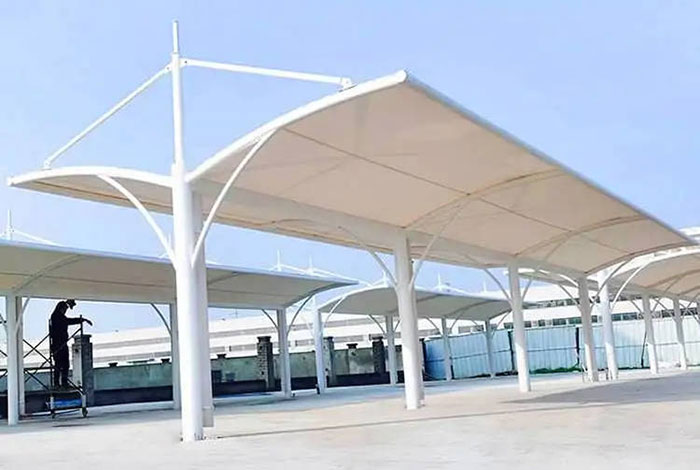Unveiling the wonders of fabric tensile structure
In the ever – evolving world of architecture and design, fabric tensile structures have emerged as a revolutionary and innovative solution. This article will delve deep into the features, applications, and benefits of fabric tensile structure, shedding light on why they are becoming increasingly popular.
I. What is a Fabric Tensile Structure?
A fabric tensile structure is a type of architectural construction that uses high – strength fabric materials, such as PTFE (polytetrafluoroethylene) or PVC (polyvinyl chloride) – coated polyester, which are stretched and supported by a system of cables, masts, and frames. The tension within the fabric and the supporting elements creates a stable and durable structure. This unique combination of materials and design allows for the creation of large – span, lightweight, and aesthetically pleasing architectural forms.

II. Key Features
A. Lightweight
One of the most remarkable features of fabric tensile structure is their lightweight nature. Compared to traditional building materials like concrete and steel, fabric materials are significantly lighter. This not only reduces the load on the supporting structures but also makes the installation process much easier and more cost – effective. For example, in the construction of large – scale sports arenas or exhibition halls, the use of fabric tensile roofs can substantially cut down the weight of the roofing system, enabling the use of less massive support columns.
B. High Strength
Despite their lightweight, fabric materials used in tensile structures are engineered to be extremely strong. PTFE – coated fabrics, for instance, can withstand high levels of tension and environmental stress. They have excellent resistance to UV radiation, weathering, and chemical corrosion, ensuring a long – service life even in harsh outdoor conditions.
C. Aesthetic Appeal
Fabric tensile structure offer a level of aesthetic flexibility that is hard to match with traditional building materials. The smooth, flowing lines of fabric can create unique and eye – catching architectural forms, adding a touch of modernity and elegance to any project. Whether it’s a contemporary concert venue or a stylish shopping mall entrance, fabric tensile structures can enhance the visual appeal of the building.

III. Applications
A. Sports Facilities
Fabric tensile structures are widely used in sports facilities. Stadiums and arenas often feature fabric roofs that provide protection from the elements while maintaining an open and airy feel. These structures can cover large areas without the need for excessive internal support columns, ensuring unobstructed views for spectators. For example, some tennis stadiums use fabric tensile roofs that can be opened or closed depending on the weather conditions, creating an ideal playing environment.
B. Commercial Buildings
In the commercial sector, fabric tensile structures are used in shopping malls, convention centers, and airports. They can be used to create unique entrances, atriums, or canopies that not only attract customers but also provide functional shelter. In airports, fabric tensile structure can be used to cover waiting areas or to create distinctive architectural elements that enhance the overall passenger experience.
C. Landscape Architecture
In landscape architecture, fabric tensile structures are used to create shade structures in parks, gardens, and outdoor recreational areas. These structures blend well with the natural environment, providing a comfortable and inviting space for people to relax. They can be designed in various shapes and sizes, from simple canopies over picnic areas to complex, sculptural forms in public plazas.

IV. Benefits
A. Cost – effectiveness
The lightweight nature of fabric tensile structures reduces construction costs in several ways. Less material is required, and the installation process is faster, which means lower labor costs. Additionally, the long – term maintenance costs are relatively low due to the durability of the fabric materials.
B. Energy Efficiency
Fabric materials used in tensile structure can have excellent thermal insulation properties. This can help to regulate the temperature inside the building, reducing the need for excessive heating or cooling systems. As a result, fabric – covered buildings can be more energy – efficient, leading to lower energy consumption and cost savings.
C. Environmental Friendliness
Fabric tensile structures are generally more environmentally friendly than traditional construction methods. The use of lightweight materials reduces the energy required for transportation and construction. Additionally, many fabric materials are recyclable, making them a sustainable choice for modern architecture.